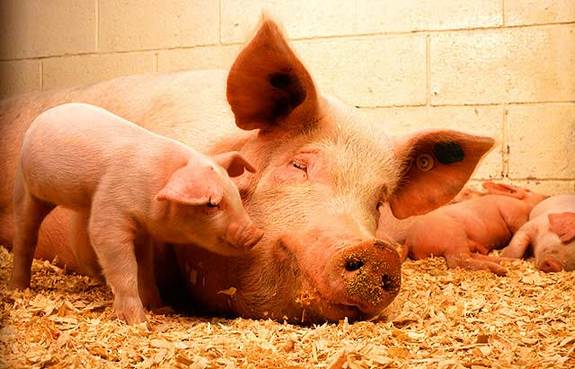Swine Flu Vaccine May Be Linked to Rare Nerve Disorder


The H1N1 (swine) flu vaccine was associated with a small but significant risk for developing a rare nervous disorder called Guillain–Barré syndrome (GBS), say doctors in a report detailed in the July 11 issue of the Journal of the American Medical Association (JAMA).
The study, conducted in Quebec, rekindles the still-controversial connection between Guillain–Barré syndrome (GBS) and the 1976 swine flu outbreak, which halted that year's flu vaccination program in the United States. It also raises questions about vaccines for flu strains originating in swine.
This latest analysis, led by Philippe De Wals of Laval University, Quebec City, Canada, followed 4.4 million residents vaccinated against the H1N1 "swine flu" in late 2009. Over the next six months, 25 people who received the vaccine developed GBS. Across the Quebec province, however, another 58 people who were not vaccinated also developed GBS.
De Wals said that, regarding the entire population, the number of GBS cases attributed to the swine flu vaccine was about 2 per 1 million doses, but that the benefits of immunization outweigh the risks.
Vaccine risks and benefits
Health experts have long been nervous to speak about risks associated with vaccines. This is because the vaccine benefits are great and the risks are small, with adverse reactions usually occurring in vulnerable populations, such as those with certain allergies or pre-existing nervous system disorders. [5 Dangerous Vaccination Myths]
Flu vaccines, in particular, save millions of lives. Influenza will kill on average about a half-million people worldwide annually, including up to 40,000 in the United States, according to the U.S. Centers for Disease Control and Prevention (CDC). Flu pandemics will kill millions.
Get the world’s most fascinating discoveries delivered straight to your inbox.
Sometimes vaccine risks are real and high because of a bad batch of drugs. A prime example is the Cutter Incident in 1955, in which the polio vaccine accidentally contained a live virus that infected 40,000 children, leading to 55 cases of paralysis and five deaths. This nearly destroyed the public's confidence in vaccines at the dawn of polio eradication.
Sometimes, however, reports of vaccine risks turn out to be false and based on fabricated science, such as the link between the measles, mumps and rubella (MMR) vaccine and autism. Measles and also whooping cough have had resurgences as a result of low vaccination rates brought on by this scare.
Thus, many health experts do not readily concede to vaccine risks when confronted with them. And Guillain–Barré syndrome haunts many like a specter.
Tale of two swine
Guillain–Barré syndrome is a serious peripheral nerve disease that can cause partial paralysis, breathing difficulties and death. Most patients recover after several months to a year, although not always fully. GBS is associated with Campylobacter jejuni, the food-borne bacterium, and several viruses; but for most cases, the immediate cause is not known, according to the CDC. [Top 10 Mysterious Diseases]
During the 1976 swine flu outbreak in the United States, health authorities reported an unusually high number of GBS cases, nearly 1,100 — half of which occurred after immunization against the flu. Panic ensued, and the vaccine program ended by December that year.
Doctors debated the connection then, and it took nearly 30 years before the prestigious U.S.-based Institute of Medicine concluded in 2003 that there was a causal relationship and that one extra person out of a million contracted GBS as a result of the vaccination.
The results of the new Quebec study on the 2009 H1N1 flu strain of swine origin are eerily similar to the conclusions drawn from the dozens of studies on the 1976 swine flu outbreak. Is there something about vaccines for flu strains of swine origin that can trigger GBS?
A much larger study published in February 2011 in the New England Journal of Medicine examined nearly 90 million doses of H1N1 vaccine in China and concluded that the answer was no. Doctors there found only 11 cases of Guillain–Barré syndrome, which actually is far lower than the natural rate.
So, one debate will continue: whether there is a small but real link between swine flu vaccines and GBS. But few if any reputable doctors will argue that the flu vaccine is dangerous or not worthwhile for most people, from infants to the elderly. In fact, a study published in the same issue of JAMA finds the H1N1 vaccine is safe for pregnant women.
Christopher Wanjek is the author of a new novel, "Hey, Einstein!", a comical nature-versus-nurture tale about raising clones of Albert Einstein in less-than-ideal settings. His column, Bad Medicine, appears regularly on LiveScience.

Christopher Wanjek is a Live Science contributor and a health and science writer. He is the author of three science books: Spacefarers (2020), Food at Work (2005) and Bad Medicine (2003). His "Food at Work" book and project, concerning workers' health, safety and productivity, was commissioned by the U.N.'s International Labor Organization. For Live Science, Christopher covers public health, nutrition and biology, and he has written extensively for The Washington Post and Sky & Telescope among others, as well as for the NASA Goddard Space Flight Center, where he was a senior writer. Christopher holds a Master of Health degree from Harvard School of Public Health and a degree in journalism from Temple University.


